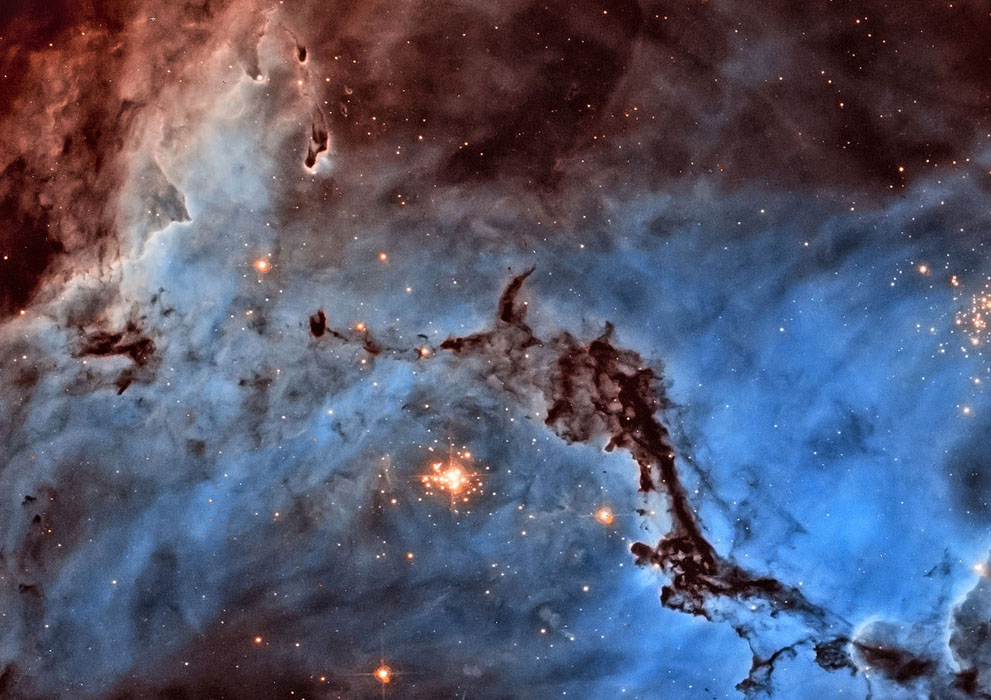
Until now. NASA uses crowdsourcing to unveil “Hubble’s hidden treasures”. The impressive pic above is “NGC 1763, part of the N11 star-forming region in the Large Magellanic Cloud,” submitted by one Josh Lake.
Haunting the Web Since 1999

Until now. NASA uses crowdsourcing to unveil “Hubble’s hidden treasures”. The impressive pic above is “NGC 1763, part of the N11 star-forming region in the Large Magellanic Cloud,” submitted by one Josh Lake.
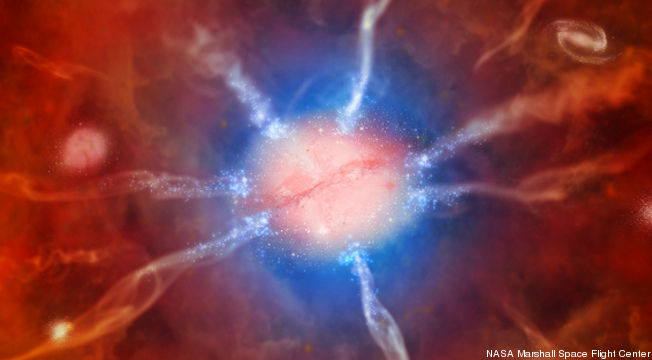
“These findings provide new insight into how the most massive galaxies in the Universe may have acquired their stars,’ said Michael McDonald, a scientist with the Massachusetts Institute of Technology (MIT), who led the study…’Our current understanding is that these massive galaxies assemble via mergers with smaller galaxies, but in this one cluster it looks like cooling-induced starbursts may be an equally important process.’“
Take that, Ed McMahon and Simon Cowell: Astronomers identify a galaxy cluster that is spewing out 3820 new stars a year, the fastest rate in the known universe. “Comparatively, the Milky Way forms stars at an average rate of just one solar mass (one star equal in mass to Earth’s Sun) per year. Other galaxies form an average of one star every 20 years.“
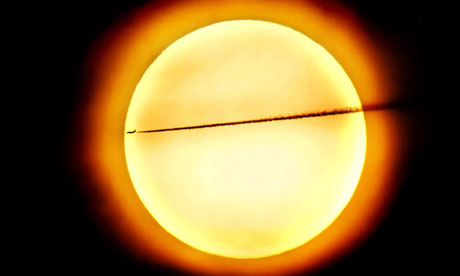
“The results were a big surprise. ‘We were shocked,’ says Kuhn. The sun doesn’t bulge much at all. It is 1.4m kilometres across, but the difference between its diameter at the equator and between the poles is only 10 kilometres.” Meanwhile closer to home, after fifty years of effort, astronomers conclude that our sun is the “most perfectly round natural object known in the universe.…Scaled to the size of a beachball, that difference is less than the width of a human hair.“

European astronomers find the farthest quasar yet discovered, 12.9 billion light years away and dating to only 770 million years after the Big Bang. “This brilliant beacon, powered by a black hole with a mass two billion times that of the Sun, is by far the brightest object yet discovered in the early Universe.“
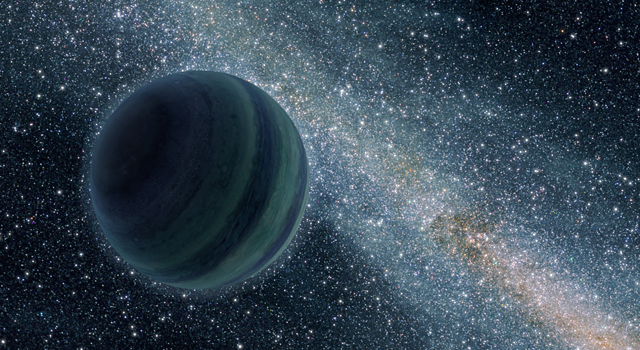
As explained by Discover‘s Phil Plait, a NASA-funded study using gravitational lensing finds possible evidence of billions of rogue planets wandering the cosmos between the stars. “In fact, these free-floaters may outnumber ‘regular’ planets by a factor of 1.5 or so. There are more of them than there are of us!…It’s thoughts that like which make me glad to be an astronomer, especially one living now. Just when you think the Universe is running low on surprises, it reminds us it’s a lot more clever than we are.”
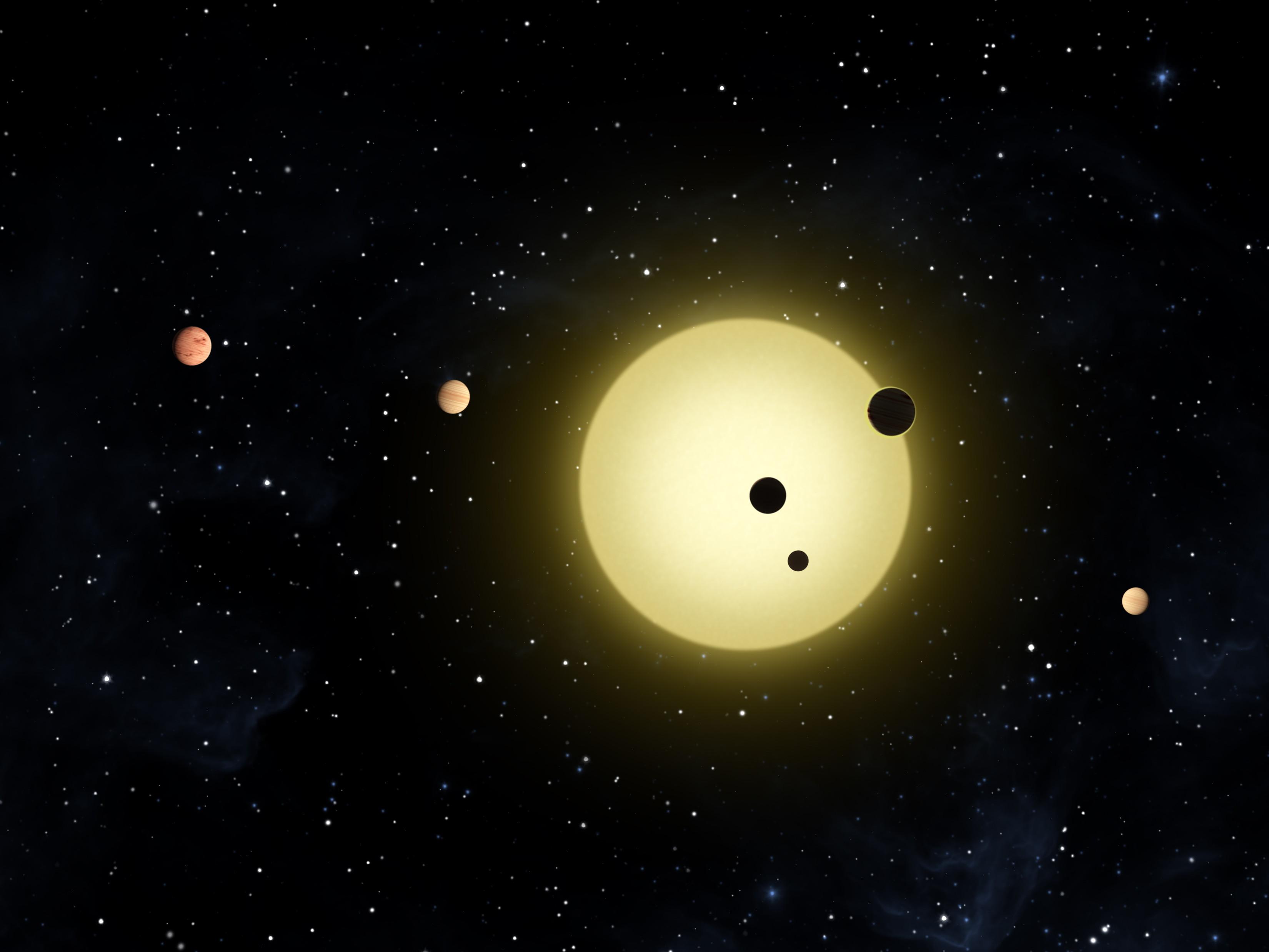
After its initial sweep of 1/400th of the sky, NASA’s Kepler telescope finds over 1200 planets — 54 of them potentially inhabitable. (The picture above is a rendering of the six-planet Kepler-11 system, 2000 light-years away.)
Discover‘s Phil Plait puts today’s findings in proper perspective: “Mind you, Kepler is only looking at a sample of stars that is one one-millionth of all the stars in the Milky Way. So it’s not totally silly to take these numbers and multiply them by a million to estimate how many planets there may be in the galaxy…70 million Earth-size planets, and a million in the habitable zone of their stars. A frakking million. In our galaxy alone.”
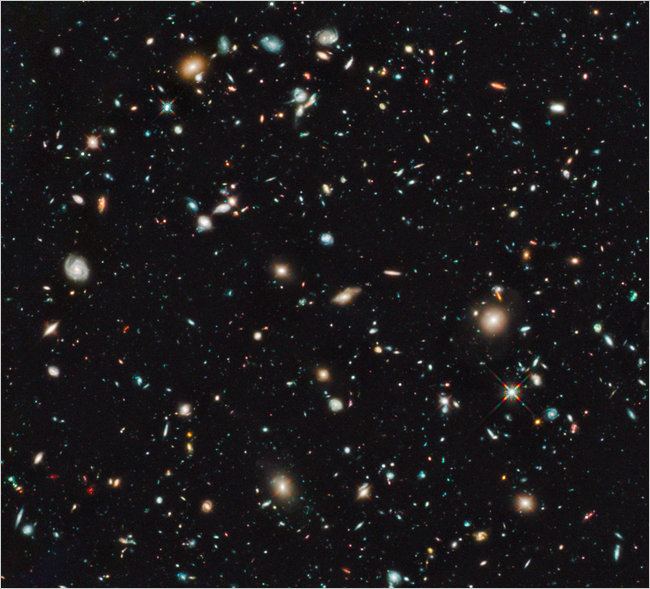
From a few days ago: The Hubble — also the subject of an excellent IMAX-3D movie I saw on Saturday — (probably) finds the oldest, farthest galaxy yet discovered. “Spectroscopic observations with the forthcoming James Webb Space Telescope, however, are needed to cement the identification of the smudge as a galaxy…The Webb telescope, which is expected to be launched later this decade once NASA figures out how to pay for it, has been designed to find these primordial galaxies and thus illuminate the dark ages.”
“‘Needless to say, none of us expected it was going to be operating for so long,’ said Krimigis, now 72. ‘We were all praying to get to Neptune [in 1989]. But after that? Who thought we could be with this 33 years [after launch]?’“
Though it’s past 11 billion miles, it’s feeling very still (after all, no more solar wind)…
By way of a friend, and as the spacecraft reaches the outer edge of the solar system, the Baltimore Sun checks in on Voyager 1 and its makers. “Voyager was the pinnacle of his career, said Ness, now 77. “There is never going to be a mission in anybody’s lifetime, now living, that is ever going to get these observations in hand. So it’s once in a lifetime.“
“We may have to abandon this notion of using the Milky Way as a template for the rest of the universe,” Dr. van Dokkum said. If the findings are correct, an undercount of dwarfs would mean astronomers have underestimated the masses of galaxies, and that would mean that galaxies developed earlier and faster than currently thought.“
Another big happening on the astrobiology front. As first seen at Dangerous Meta, a joint Harvard-Yale study published in Nature finds that our universe may have three times as many stars as we thought. “That suggests a universe of roughly 100 sextillion stars, with an approximate margin of error of about 10 times fewer or 10 times more.“

Scientists at the Large Hadron Collider in Cern have found a way to hold atoms of antimatter for a fraction of a second. “[T]he ability to study such antimatter atoms will allow previously impossible tests of fundamental tenets of physics….'[W]e need a lot more atoms and a lot longer times before it’s really useful – but one has to crawl before you sprint.’”
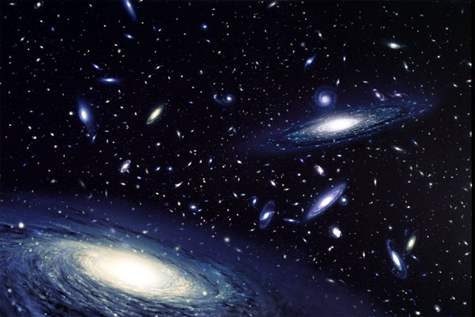
By way of cdogzilla, PhysOrg’s Lisa Zyga describes a new cosmological theory by Wun-Yi Shu of Taiwan that, among other things,does away with the Big Bang. “Essentially, this work is a novel theory about how the magnitudes of the three basic physical dimensions, mass, time, and length, are converted into each other…The theory resolves problems in cosmology, such as those of the big bang, dark energy, and flatness, in one fell stroke.”